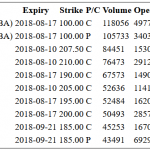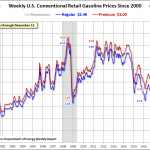You hear a lot in the marketplace about “buying the dip”. With the market continuing to sit near record high levels, the definition of what qualifies as a dip has grown narrower. Traders used to wait for the markets to drop at least 5%, and preferably more, before looking to pick up some bargains. Nowadays, a 1-2% move has the buyers coming out. There haven’t been many traditional “buy the dip” opportunities lately, but we may see one in the coming month.
We’re coming up on that time of year again when Congress needs to agree on a federal budget. The current fiscal year expires on September 30th allowing about a month for a deal to be reached. Perhaps more important this time around is the fact that the debt ceiling is expected to be reached sometime in the middle of October. The most obvious solution to the problem is to raise the debt ceiling. The only problem with that is that it requires both sides of the aisle to agree which, of course, doesn’t always happen. Failing to raise the debt limit in time could cause the government to default on its debts, including Social Security, Medicare and interest on outstanding Treasury debt.
The market hates uncertainty which is why Congress is being pushed to come to a debt ceiling agreement sooner rather than later. History has shown that an impending debt ceiling breach is a relative non-event for the markets unless the drop dead date draws near with no resolution in sight. At that point, you could see yields on Treasuries rise and the value of outstanding drop. The equity markets will likely drop in sympathy as well. If the debt ceiling is breached with no legislation to raise it, the pain in the fixed income markets will be significant.
I’m going to assume a resolution to lift the debt ceiling will be reached. It was always does (unless I just jinxed it!). Keep an eye on yields on government securities over the next few weeks to see if they start rising due to debt ceiling uncertainty. Assuming that the debt ceiling is raised before it’s reached in October, it could present a nice little “buy the dip” opportunity for well-informed investors.
















Leave A Comment